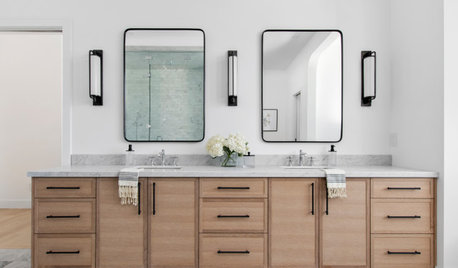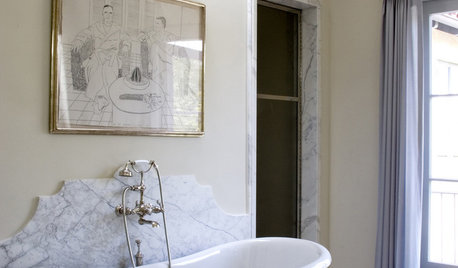How to fix marble-water problem?
sixthave
16 years ago
Related Stories

ECLECTIC HOMESHouzz Tour: Problem Solving on a Sloped Lot in Austin
A tricky lot and a big oak tree make building a family’s new home a Texas-size adventure
Full Story
SELLING YOUR HOUSEFix It or Not? What to Know When Prepping Your Home for Sale
Find out whether a repair is worth making before you put your house on the market
Full Story
SELLING YOUR HOUSE5 Savvy Fixes to Help Your Home Sell
Get the maximum return on your spruce-up dollars by putting your money in the areas buyers care most about
Full Story
BATHROOM TILEQuick Fix: Repair Cracked Bathroom Grout
Banish an eyesore and safeguard your bathroom from water damage in 30 minutes or less with this DIY repair
Full Story
REMODELING GUIDESThe Hidden Problems in Old Houses
Before snatching up an old home, get to know what you’re in for by understanding the potential horrors that lurk below the surface
Full Story
HOUSEKEEPING10 Problems Your House May Be Trying to Show You
Ignore some of these signs and you may end up with major issues. We tell you which are normal and which are cause for concern
Full Story
HOUSEKEEPINGHow to Clean Marble Countertops and Tile
Acidic solutions can damage your marble surfaces. Here’s how to keep marble looking clean and amazing
Full Story
KITCHEN DESIGNUsing White Marble: Hot Debate Over a Classic Beauty
Do you love perfection or patina? Here's how to see if marble's right for you
Full Story
REMODELING GUIDESWhy Marble Might Be Wrong for Your Bathroom
You love its beauty and instant high-quality appeal, but bathroom marble has its drawbacks. Here's what to know before you buy
Full Story
MATERIALS10 Modern Marble Looks
Marble has broken free of the standard kitchen countertop slab and is showing up on bathtub backsplashes, modern dining tables and more
Full StoryMore Discussions









bill_vincent
sixthaveOriginal Author
Related Professionals
Southampton Kitchen & Bathroom Designers · Town 'n' Country Kitchen & Bathroom Designers · Shamong Kitchen & Bathroom Remodelers · Fair Oaks Kitchen & Bathroom Remodelers · Gilbert Kitchen & Bathroom Remodelers · Lisle Kitchen & Bathroom Remodelers · New Port Richey East Kitchen & Bathroom Remodelers · Shawnee Kitchen & Bathroom Remodelers · Toms River Kitchen & Bathroom Remodelers · Barrington Glass & Shower Door Dealers · Homestead Glass & Shower Door Dealers · Pacific Grove Glass & Shower Door Dealers · Mount Pleasant Window Treatments · North Tustin Window Treatments · Rancho Santa Margarita Window Treatmentsbill_vincent